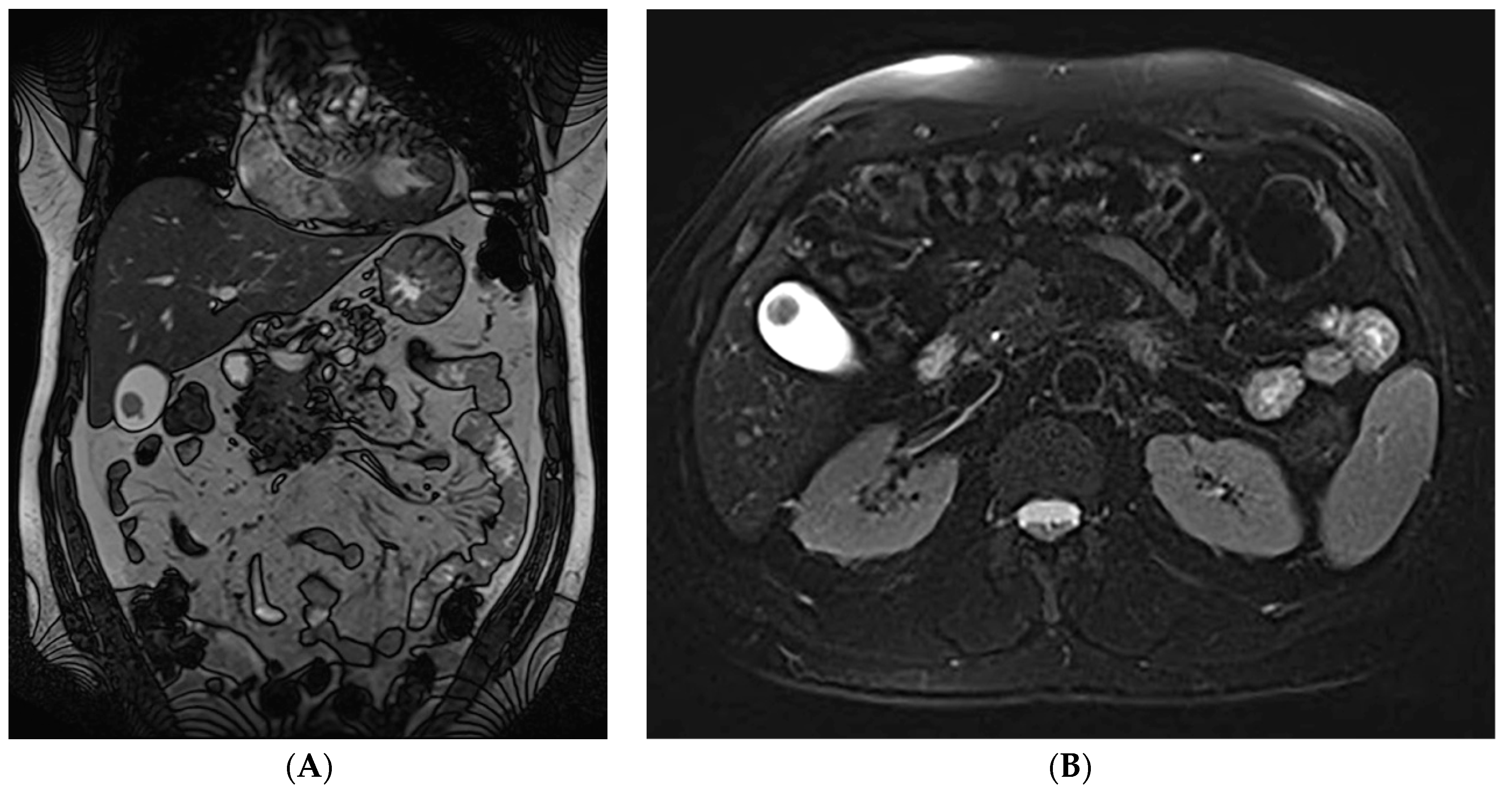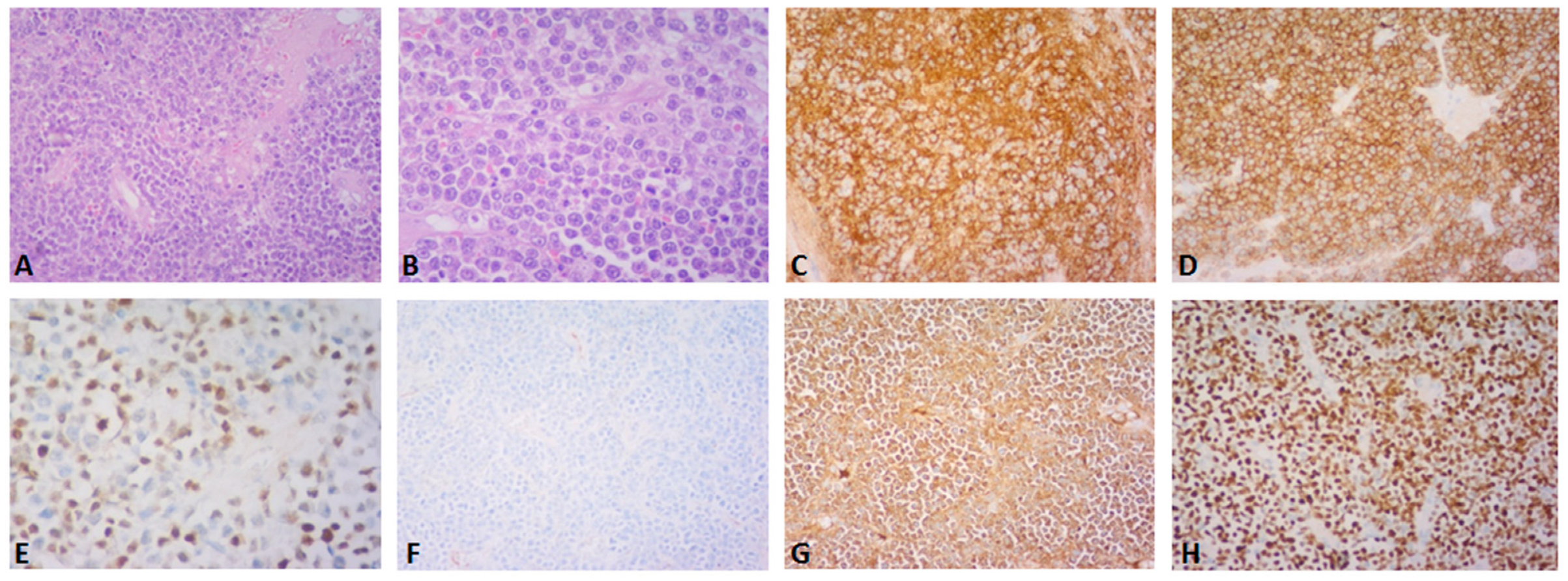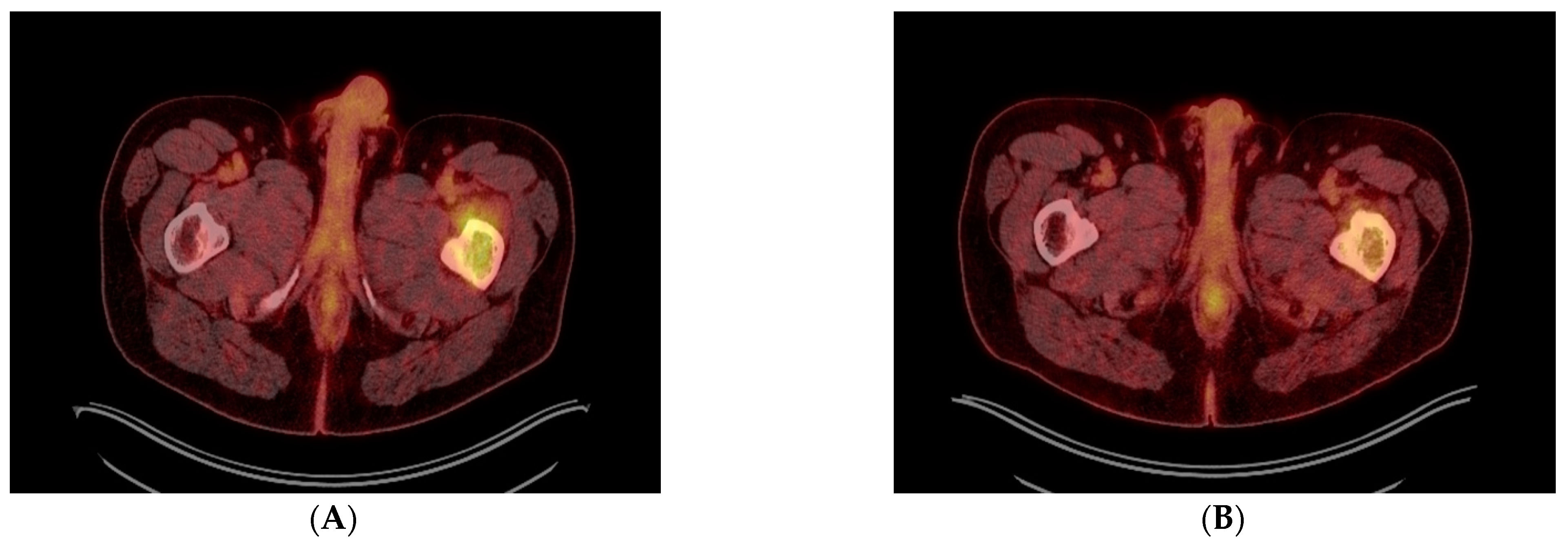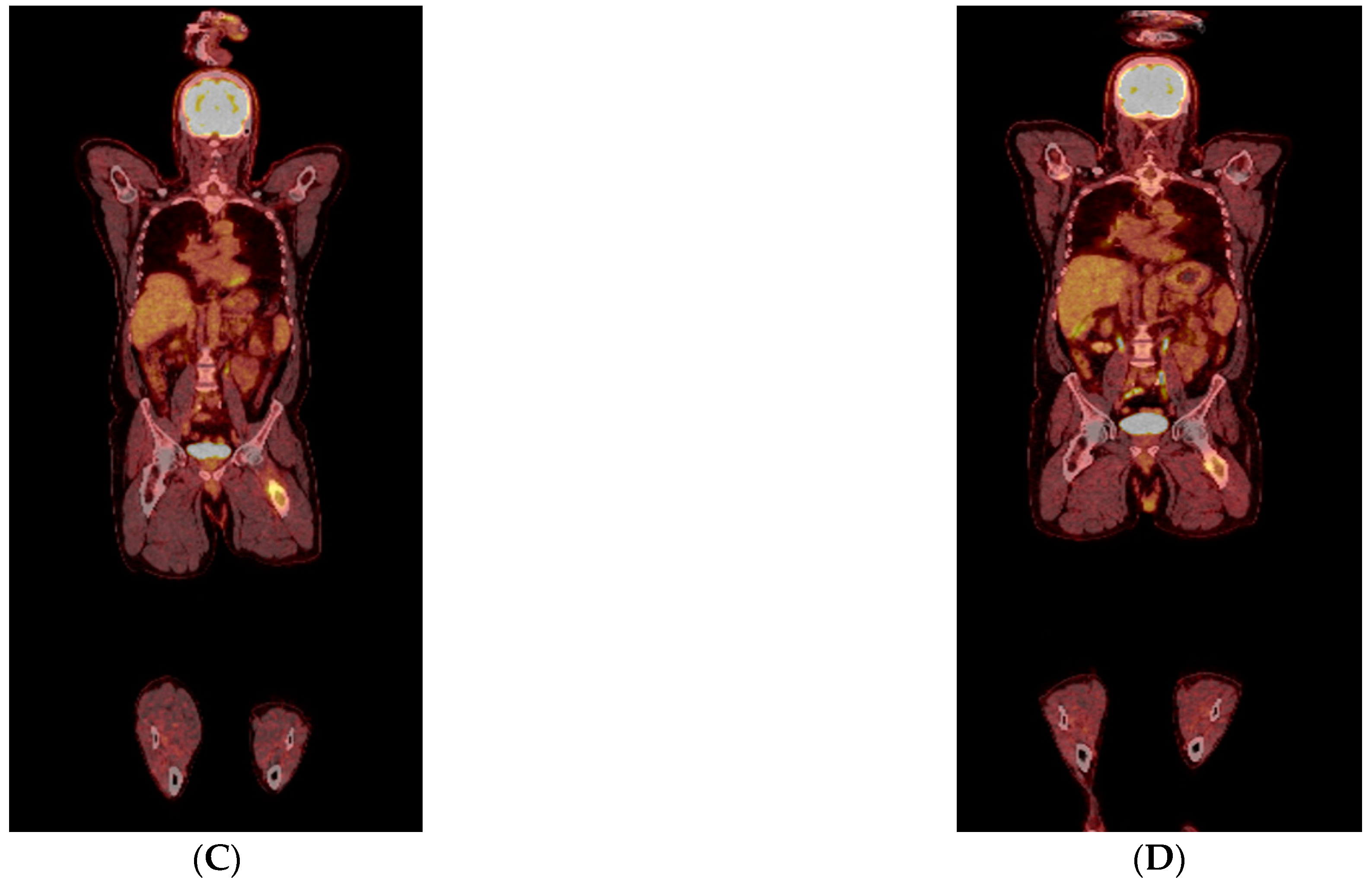A Patient with Synchronous Gallbladder and Bone Plasmacytoma
Abstract




Author Contributions
Funding
Institutional Review Board Statement
Informed Consent Statement
Data Availability Statement
Conflicts of Interest
References
- Romain, P.S.; Desai, S.; Bean, S.; Jiang, X.; Burbridge, R.A. Extramedullary plasmacytoma of the gallbladder diagnosed by endoscopic ultrasound fine needle aspiration (EUS-FNA). J. Gastrointest. Oncol. 2015, 6, E7–E9. [Google Scholar] [CrossRef]
- Abughanimeh, O.; Qasrawi, A.; Abu Omar, M.; Bahaj, W.; Abu Ghanimeh, M. A Case of Multiple Myeloma Associated with Extramedullary Plasmacytoma of the Gallbladder Manifesting as Acute Cholecystitis. Cureus 2018, 10, e2688. [Google Scholar] [CrossRef] [PubMed]
- Zhang, D.; Cao, D.; Shen, D.; Shrestha, S.M.; Yin, Y. Extramedullary plasmacytoma occuring in ileocecum. Medicine 2017, 96, e9313. [Google Scholar] [CrossRef] [PubMed]
- Lee, J.H.; Bae, I.H.; Han, G.S.; Cha, S.H.; Kim, S.J.; Park, K.S.; Shin, H.M.; Song, H.G. Extramedullary Plasmacytoma of the Gallbladder: A Case Report. J. Korean Radiol. Soc. 2002, 46, 155–157. [Google Scholar] [CrossRef]
- Chang, S.-T.; Liao, Y.-L.; Lu, C.-L.; Chuang, S.-S.; Li, C.-Y. Plasmablastic Cytomorphologic Features in Plasma Cell Neoplasms in Immunocompetent Patients Are Significantly Associated With EBV. Am. J. Clin. Pathol. 2007, 128, 339–344. [Google Scholar] [CrossRef] [PubMed]
- Yang, H.L.; Sun, Y.G.; Wang, Z. Polypoid lesions of the gallbladder: Diagnosis and indications for surgery. Br. J. Surg. 1992, 79, 227–229. [Google Scholar] [CrossRef] [PubMed]
- Viswanathan, S.R.; Khalpey, Z.; Ashley, S.W. Gallbladder lymphoma. Med Oncol. 2010, 28, 810–812. [Google Scholar] [CrossRef] [PubMed]
- Zemour, J.; Marty, M.; Lapuyade, B.; Collet, D.; Chiche, L. Gallbladder tumor and pseudotumor: Diagnosis and management. J. Visc. Surg. 2014, 151, 289–300. [Google Scholar] [CrossRef] [PubMed]
- Ding, W.; Tan, Y.; Qian, Y.; Xue, W.; Wang, Y.; Xi, C.; Gu, K.; Xu, Y.; Xu, X. Primary plasmablastic plasmacytoma in the stomach of an immunocompetent adult. Medicine 2019, 98, e14235. [Google Scholar] [CrossRef] [PubMed]
- Vega, F.; Chang, C.-C.; Medeiros, L.J.; Udden, M.M.; Cho-Vega, J.H.; Lau, C.-C.; Finch, C.J.; A Vilchez, R.; McGregor, D.; Jorgensen, J.L. Plasmablastic lymphomas and plasmablastic plasma cell myelomas have nearly identical immunophenotypic profiles. Mod. Pathol. 2005, 18, 806–815. [Google Scholar] [CrossRef] [PubMed]
- Majhi, U.; Sundersingh, S.; Murhekar, K.; Radha, K. Extramedullary sarcomatoid variant of plasmablastic plasmacytoma. J. Cancer Res. Ther. 2017, 13, 1078–1079. [Google Scholar]
- Glasbey, J.; Arshad, F.; Almond, L.; Vydianath, B.; Desai, A.; Gourevitch, D.; Ford, S. Gastrointestinal manifestations of extramedullary plasmacytoma: A narrative review and illustrative case reports. Ind. Mark. Manag. 2018, 100, 371–376. [Google Scholar] [CrossRef] [PubMed]
- Mouchli, M.; Grider, D.J.; Yeaton, P. Gallbladder Metastases: A Report of Two Cases. Case Rep. Oncol. 2019, 12, 235–240. [Google Scholar] [CrossRef]
Disclaimer/Publisher’s Note: The statements, opinions and data contained in all publications are solely those of the individual author(s) and contributor(s) and not of MDPI and/or the editor(s). MDPI and/or the editor(s) disclaim responsibility for any injury to people or property resulting from any ideas, methods, instructions or products referred to in the content. |
© 2023 by the authors. Licensee MDPI, Basel, Switzerland. This article is an open access article distributed under the terms and conditions of the Creative Commons Attribution (CC BY) license (https://creativecommons.org/licenses/by/4.0/).
Share and Cite
Markouli, M.; Saridaki, A.; Viniou, N.-A.; Giannakopoulou, N.; Lakiotaki, E.; Korkolopoulou, P.; Diamantopoulos, P. A Patient with Synchronous Gallbladder and Bone Plasmacytoma. Diagnostics 2023, 13, 1509. https://doi.org/10.3390/diagnostics13091509
Markouli M, Saridaki A, Viniou N-A, Giannakopoulou N, Lakiotaki E, Korkolopoulou P, Diamantopoulos P. A Patient with Synchronous Gallbladder and Bone Plasmacytoma. Diagnostics. 2023; 13(9):1509. https://doi.org/10.3390/diagnostics13091509
Chicago/Turabian StyleMarkouli, Mariam, Alexia Saridaki, Nora-Athina Viniou, Nefeli Giannakopoulou, Eleftheria Lakiotaki, Penelope Korkolopoulou, and Panagiotis Diamantopoulos. 2023. "A Patient with Synchronous Gallbladder and Bone Plasmacytoma" Diagnostics 13, no. 9: 1509. https://doi.org/10.3390/diagnostics13091509
APA StyleMarkouli, M., Saridaki, A., Viniou, N.-A., Giannakopoulou, N., Lakiotaki, E., Korkolopoulou, P., & Diamantopoulos, P. (2023). A Patient with Synchronous Gallbladder and Bone Plasmacytoma. Diagnostics, 13(9), 1509. https://doi.org/10.3390/diagnostics13091509






